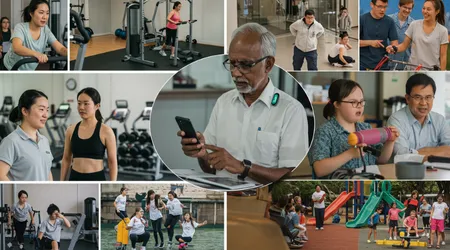Understanding the UN Convention on the Rights of Persons with Disabilities

The UN Convention on the Rights of Persons with Disabilities (CRPD), adopted in 2006, is a landmark treaty redefining disability rights.
Entering force in 2008, it shifted the global perspective from charity to empowerment. This blog post explores its significance, principles, and impact on public policies in 2025.
Why does this treaty matter today?
It’s a beacon for inclusion, guiding nations toward equitable societies. Let’s dive into its framework, real-world applications, and ongoing challenges.
The Genesis and Purpose of the CRPD
The UN Convention on the Rights of Persons with Disabilities emerged from decades of advocacy.
Historically, people with disabilities were marginalized, often seen as objects of pity. The CRPD, adopted on December 13, 2006, challenged this narrative.
It’s the first human rights treaty of the 21st century, with 192 ratifications by 2025.
Its purpose is clear: ensure people with disabilities enjoy equal rights. The treaty spans civil, political, economic, and social domains.
++ The Real Impact of Accessibility Mandates in Public Transportation
It emphasizes dignity, autonomy, and inclusion. Unlike earlier frameworks, it views disability as a social construct, shaped by barriers, not just impairments.
Negotiated rapidly from 2002 to 2006, the CRPD reflects global consensus. It’s not just a document but a movement.
For example, in Brazil, it inspired laws mandating accessible public transport. Yet, implementation varies, highlighting the need for sustained advocacy.

Core Principles Driving Change
The UN Convention on the Rights of Persons with Disabilities rests on eight principles, including non-discrimination and accessibility.
These guide its 50 articles, shaping policies worldwide. Respect for dignity and autonomy tops the list, empowering individuals to make choices.
Inclusion is another cornerstone. Article 24, for instance, mandates inclusive education.
In 2023, UNESCO reported 80% of children with disabilities in low-income countries lack access to quality education.
Also read: How Disability Laws Differ Across Europe: A Country-by-Country Breakdown
This statistic underscores the CRPD’s urgency. Countries like Canada have responded with inclusive school policies.
Equality and participation round out the principles. The treaty demands reasonable accommodations, like workplace adjustments.
In Japan, companies adopting universal design saw productivity rise. These principles aren’t abstract they’re practical tools for systemic change.
| Principle | Description | Example Application |
|---|---|---|
| Dignity and Autonomy | Respect individual choices | Supported decision-making laws in Australia |
| Non-Discrimination | Equal treatment in all areas | Anti-discrimination laws in South Africa |
| Inclusion | Full participation in society | Inclusive education in Canada |
| Accessibility | Barrier-free environments | Universal design in Japan’s public spaces |
Accessibility: The Heart of the CRPD
Accessibility is a pillar of the UN Convention on the Rights of Persons with Disabilities.
Article 9 mandates barrier-free environments, from buildings to digital platforms. In 2025, web accessibility remains critical as online services dominate daily life.
Consider Maria, a visually impaired student in Spain. Thanks to CRPD-inspired laws, her university’s website uses screen-reader-compatible formats.
This enables her to access course materials independently. Yet, globally, only 10% of websites meet accessibility standards, per a 2024 WebAIM report.
Physical accessibility also matters. In Kenya, CRPD-driven policies led to ramps in public buildings. But challenges persist rural areas often lack infrastructure.
Read more: Car tax exemptions for people with disabilities: international guide
The treaty’s call for universal design pushes for solutions that benefit everyone, like automatic doors in malls.
The EU’s 2016 Web Accessibility Directive, rooted in the CRPD, mandates accessible public sector websites.
This shows the treaty’s ripple effect. Still, enforcement lags in some regions, demanding stronger accountability.
Employment and Economic Inclusion
The UN Convention on the Rights of Persons with Disabilities tackles employment through Article 27.
It prohibits workplace discrimination and promotes reasonable accommodations. In 2025, this is vital as economies recover from global disruptions.
Take Ahmed, a wheelchair user in Egypt. CRPD-aligned policies helped him secure a tech job with an adjustable desk.
Such accommodations boost productivity and morale. Yet, globally, only 50% of people with disabilities are employed, compared to 75% of non-disabled peers (ILO, 2024).
The treaty also encourages entrepreneurship. In India, CRPD-inspired microfinance programs support disabled entrepreneurs.
These initiatives foster independence. However, cultural biases and inaccessible workplaces remain hurdles, requiring targeted policies.
Public sector employment is another focus. Countries like Germany mandate hiring quotas for people with disabilities.
This aligns with the CRPD’s vision of economic inclusion. Still, private sector adoption varies, needing incentives like tax breaks.
Political and Social Participation
The UN Convention on the Rights of Persons with Disabilities champions participation via Article 29.
It ensures voting accessibility and political engagement. In 2025, this is crucial amid rising democratic challenges.
In Australia, CRPD-driven reforms made polling stations accessible, with Braille ballots. This empowered voters like Sarah, who has low vision.
Yet, in some nations, inaccessible voting systems exclude millions. The treaty demands secret, independent voting for all.
Social participation extends to cultural life (Article 30). In South Africa, museums now offer tactile exhibits, inspired by the CRPD.
These efforts break isolation. However, funding shortages often limit such initiatives, calling for creative solutions.
Freedom of expression (Article 21) is equally vital. Sign language recognition, as in New Zealand, ensures communication access.
But digital divides persist, especially in rural areas. The CRPD’s vision requires bridging these gaps.
Challenges and Criticisms in 2025
Despite its impact, the UN Convention on the Rights of Persons with Disabilities faces challenges. Implementation varies widely.
Wealthier nations often lead, while low-income countries struggle with resources. This creates an inclusion gap.
Monitoring is another issue. Article 33 requires national oversight, but some states lack robust mechanisms.
For instance, in certain African nations, data on disability rights is scarce, hindering policy-making. The CRPD calls for disaggregated data to track progress.
Critics argue the treaty’s scope is ambitious. Small states may find compliance costly.
Yet, the CRPD’s flexibility allows progressive realization gradual implementation based on capacity. This balances ambition with pragmatism.
Cultural resistance also persists. In some regions, stigma around disability undermines CRPD goals.
Awareness campaigns, as mandated by Article 8, are critical. For example, India’s media campaigns have shifted public perceptions, but change is slow.
The CRPD’s Global Impact and Future

The UN Convention on the Rights of Persons with Disabilities has reshaped global policies.
From Brazil’s accessible transport to Canada’s inclusive schools, its influence is tangible. In 2025, it remains a catalyst for change.
Think of the CRPD as a bridge, connecting isolated individuals to society’s mainstream. Its impact extends beyond laws to cultural shifts.
For instance, Japan’s universal design benefits elderly citizens too, showing broader societal gains.
Looking ahead, technology offers opportunities. AI-driven accessibility tools, like real-time captioning, align with CRPD goals.
Yet, digital divides must be addressed. The treaty’s future lies in innovation and accountability.
The CRPD’s Optional Protocol, ratified by 107 states, strengthens enforcement.
It allows individuals to file complaints, amplifying voices. Expanding its adoption could enhance global compliance.
Conclusion: A Call to Action
The UN Convention on the Rights of Persons with Disabilities is more than a treaty it’s a commitment to humanity. In 2025, its principles guide us toward inclusive societies.
From accessible websites to inclusive workplaces, its impact is profound yet incomplete.
Governments, businesses, and communities must act. Will we build a world where everyone thrives? The CRPD shows the way, but action is ours.
Frequently Asked Questions
What is the UN Convention on the Rights of Persons with Disabilities?
It’s a 2006 UN treaty ensuring equal rights for people with disabilities, covering accessibility, employment, and participation.
How does the CRPD affect national laws?
It requires states to align policies with its principles, like mandating accessible infrastructure or inclusive education.
Why is accessibility important in the CRPD?
Accessibility ensures people with disabilities can participate fully, from using public transport to accessing digital services.
What challenges does the CRPD face?
Implementation varies due to resource constraints, cultural stigma, and weak monitoring in some regions.
How can individuals support the CRPD?
Advocate for accessible policies, support inclusive businesses, and raise awareness about disability rights.
